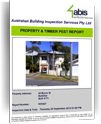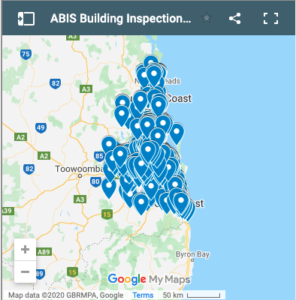Cracking and movement to structural elements

Whenever structural cracking and movement appear significant or significantly worsen, a qualified & licensed Structural Engineer should be consulted for further advice.
Cracks occur when forces either externally, internally within a building, or as a result of chemical changes within the building’s materials are greater than it can withstand.
Cracking and movement can be structurally dangerous. Differential movement throughout a building may be a consequence of poor design, ageing or changing environmental conditions to which a rigid building cannot adapt without fracturing.
The form and positioning of cracking depend upon the building’s weak points, particularly around doors and windows and where floor and roof connect to walls. Other factors are the size, shape, and position of the crack, the age of the crack indicating repetitive movement, and crack widening suggesting settlement or support failure.
Foundation Related Cracking
Reactive Soils
Reactive soils e.g. clays are susceptible to expansion and contraction with varying soil moisture content. Non-reactive soils e.g. sands, silt and gravel are susceptible to shear and loadbearing failure.
Common causes of swelling and shrinkage in reactive soils
Vegetation
Root systems of trees and shrubs around a building remove moisture from foundations causing localised settlement. Conversely, when established trees or shrubs near a building are removed, the foundation soil expands as it reabsorbs moisture and localised upheaval results. Only shrubs or small trees with relatively non-troublesome root systems should be planted within 2 meters of a building and larger trees kept at least 10 meters away.
Sun Exposure
Differential rates of cracking may occur when parts of a building are more exposed to the sun than others. Especially vulnerable are northeastern and northwestern corners which receive full morning and afternoon sun. This may be evidenced by diagonal cracking which is wider at the top and subject to seasonal variation.
Soil Moisture Content
Dome and saucer effects occur with long-term changes in soil moisture content. Dome effects follow hot wet summers and warm dry winters causing moisture to migrate under a building and plastic soils to expand into a dome shape. As a consequence, external walls tend to rotate outwards at the top causing cracking especially around openings. Internal walls may develop cracks which open at the top narrowing to the bottom and floors may bulge as supports rise.
Conversely, saucer effects follow long dry summers and cold wet winters. The soil under the building is parched in summer and never regains balanced moisture content in winter even when the soil surrounding the building is continually wet. External walls rotate inwards at the top. Internal walls develop cracks which open at the bottom of the wall narrowing towards the top and floors become springy and sag as internal supports drop below bearers.
Uneven Foundation Settlement
Is associated with a new building where cracking with a differential movement of foundations placing excessive strain on a building. Common causes may include:
- Consolidation of foundations as water is expelled from the soil under the weight of the building
- Shear failure of foundations when foundation soil is forced from under footings because of gross overloading, excavation or excessive wetting
- Building on inadequately compacted fill
- Building on variable foundations resulting in differential consolidation and uneven settlement
Other Causes of Cracking
- Excessive wetting due to garden sprinkler systems watering beds situated close to external walls, blocked or leaking downpipes and stormwater drains, surface run-off from the raised street and footpath levels and underwater streams or old watercourses.
- Additions to building, if keyed or bonded to the original building with differential settlement rates between original and added building, acerbated by rotational effects.
- Rusting of embedded steel in masonry on lintels, arch bars, wall ties, and bolts displacing surrounding masonry to create stepped or horizontal cracking from the point of embedment.
- Where old pitched roofs have not been adequately secured or supported, the roof will tend to sag and spread especially at the eaves causing external and internal cracking at the top of walls.
- Being a clay product, bricks have a natural tendency to expand for years after leaving the kiln, depending upon the type of clay used, the degree of burning and their subsequent exposure to moisture. Expansion joints are necessary to prevent cracking, bowing and arching.
Cracking In Finished Surfaces
Full depth cracking in external rendered surfaces occurs when the backing material has fractured due to movement of masonry walls on expansive soils or foundation failure. Cracking may also be due to rusting of embedded material or the growth and expansion of salt crystals in mortar joints. Crazing and surface cracking results from long-term weathering and defective finishing techniques e.g. excessive trowelling or where the finishing coat is cement-rich compared to the undercoat.
Major failure in solid internal plaster is associated with movement of backing material causing loss of adhesion (drumminess) and cracking. Minor cracking and crazing occur with age. Drumminess in old plaster is caused by the use of incompatible coatings with varying shrinkage rates.
Internal plaster sheeting problems are the result of the sheet itself – old plaster sheeting suffers from sagging caused by poor fixing, the effects of long-term loading and deterioration in the bonding. Cracks develop at joints caused by insufficient support for the sheet, shrinkage of pointing material or movement of backing. Cracks in plasterboard are caused by shrinkage and warping in buildings as they age and adjust to new environmental conditions.
Cracking and Movement in Concrete Slabs
- Drying shrinkage usually occurs during setting and is the most common cause of cracking
- Differential settlement and foundation movement
- Movement while concrete is “green”
- “Concrete cancer” evidenced by rust spots, bulging, surface cracking or chunks of concrete breaking away may occur in the presence of moisture where salts permeate the concrete causing localised corrosion and expansion of steel reinforcement
*Disclaimer: We do not provide professional advice nor services related to any infrastructure planning and building.
Please refer to your local city council for more information.




